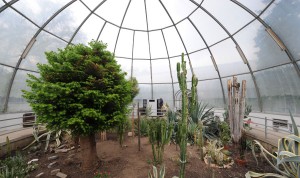News
Keep your cool and your data safe
Virtually every aspect of modern life relies on electronic data in some way. From the apps in your phone to the magnetic stripes on your credit cards to the car that you drive, it’s hard to imagine a day in which you don’t interact with remotely stored data in some way. Even devices without any electronics at all rely on numerical computations: High-performance bicycles, for example, are designed using fluid dynamics software running on banks of servers.
Data centers are the facilities responsible for calculating, storing, and providing access to digital information. Within these massive warehouses, the servers, switches, and telecommunications equipment that do the heavy lifting (Moving electrons is surprisingly hard work) generate impressive amounts of heat, which must be removed to prevent malfunctions. A critical feature of all modern data centers, then, is an effective cooling strategy to keeps things running smoothly.
Cooling represents about a third of the total power requirement of a typical data center. And as processing power continues to increase, it’s not uncommon for the electronics in a large facility to generate heat on the order of tens of megawatts. Data centers have traditionally relied on large air conditioning systems to circulate cold air beneath raised floors, but some forward thinkers have found innovative ways to recycle heat:
- IBM’s Uitikon data center near Zürich repurposes waste heat to warm a nearby swimming pool.
- Notre Dame University’s Center for Research Computing uses its heat output to warm a greenhouse.
- Amazon plans to rely on a data center’s waste to heat the buildings in its new Denny Triangle campus.

Regardless of the cooling strategy, though, the airflow patterns both inside and outside the facility need to be optimized to promote the flow of waste heat away from vital equipment. In a poorly designed data center, it’s possible for hot air from an exhaust to actually re-enter the building through an intake. But considering wind effects as part of the initial design can anticipate such situations and prevent costly retrofitting and redesigns down the road.
CPP’s engineers have consulted on numerous data center projects to help owners and developers discover innovative solutions to heat exhaust and air quality problems. We consider both external issues like wind effects and internal features like HVAC layout to ensure that customers’ data remains safe. After all, when it comes to data, keeping it safe is the best way to keep your cool.
